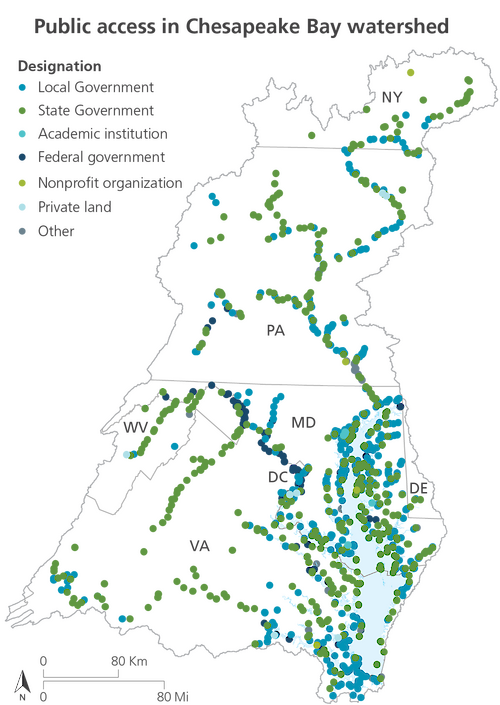Striped bass, bay anchovy, and blue crab are ecologically, economically, and socially important fish species in Chesapeake Bay, and are incorporated into the Fisheries Index. While the Fisheries Index is variable over time, the 2016 score of 90% was a large improvement over the previous year’s score of 73%. This is the highest the fisheries score has been since the start of the report card. The Index is an average of all three species scores. Striped bass held steady with a100% score, while both blue crab and bay anchovy improved. Blue crab scored a 90% and bay anchovy scored an 80%. Fisheries indicators can vary greatly from year to year since these species move throughout the Bay and beyond.

Partnerships work to keep the Bay thriving
Actions are underway to protect and restore the water, habitats, and animals of throughout the Chesapeake Bay watershed. These actions are being led by local, state, and federal governments, nonprofit organizations, academic institutions, private businesses, and individual citizens. Strong collaborations and sharing of resources among these groups maximizes the effectiveness of their work. Partnerships are essential to optimize the valuable work occurring throughout the Bay.
One way in which unique partnerships are protecting the Bay is through land conservation. There are currently 8.8 million acres of protected lands watershed-wide. They have been protected through unique partnerships such as the Chesapeake Conservation Partnership (chesapeakeconservation.org). This regional coalition of over 50 organizations is guiding land conservation by bridging the connection between ecological, cultural, and recreational resources. Key leads are the Chesapeake Conservancy and the National Park Service Chesapeake Bay Office.
Interstate partnerships are also positively influencing the Bay. Maryland and Virginia collaborate on innovative technologies and share knowledge about oyster conservation. Oysters support the economy, the environment, and our cultural heritage. But overharvesting, disease, and pollution have all impacted oyster populations. Restoring and sustaining the populations into the future is essential to the success of all Bay restoration. Maryland, Virginia, federal agencies, and nonprofits have restored significant numbers of oysters in tributaries in both Maryland and Virginia.

Fun for you and your family
Stewardship is defined as “the responsible overseeing and protection of something considered worth caring for and preserving.” In order to feel a sense of stewardship with a resource like Chesapeake Bay, people need to connect with it and feel a sense of place. This sense of place that comes from experiencing the Chesapeake’s waters can lead to a feeling of kinship and a sense of shared responsibility for Bay resources. As a result, people who enjoy the Bay and its rivers through public access sites are more likely to become citizen stewards.
Expanding public access opportunities for citizens around the Chesapeake Bay watershed for activities like boating, fishing, swimming, and viewing is a focus of the Chesapeake Bay Program partnership. These public access points provide a fun way for people to connect with nature. Activities they participate in strengthen families, build personal connections, boost local, state, and federal economies, and support stewardship of the Bay.

